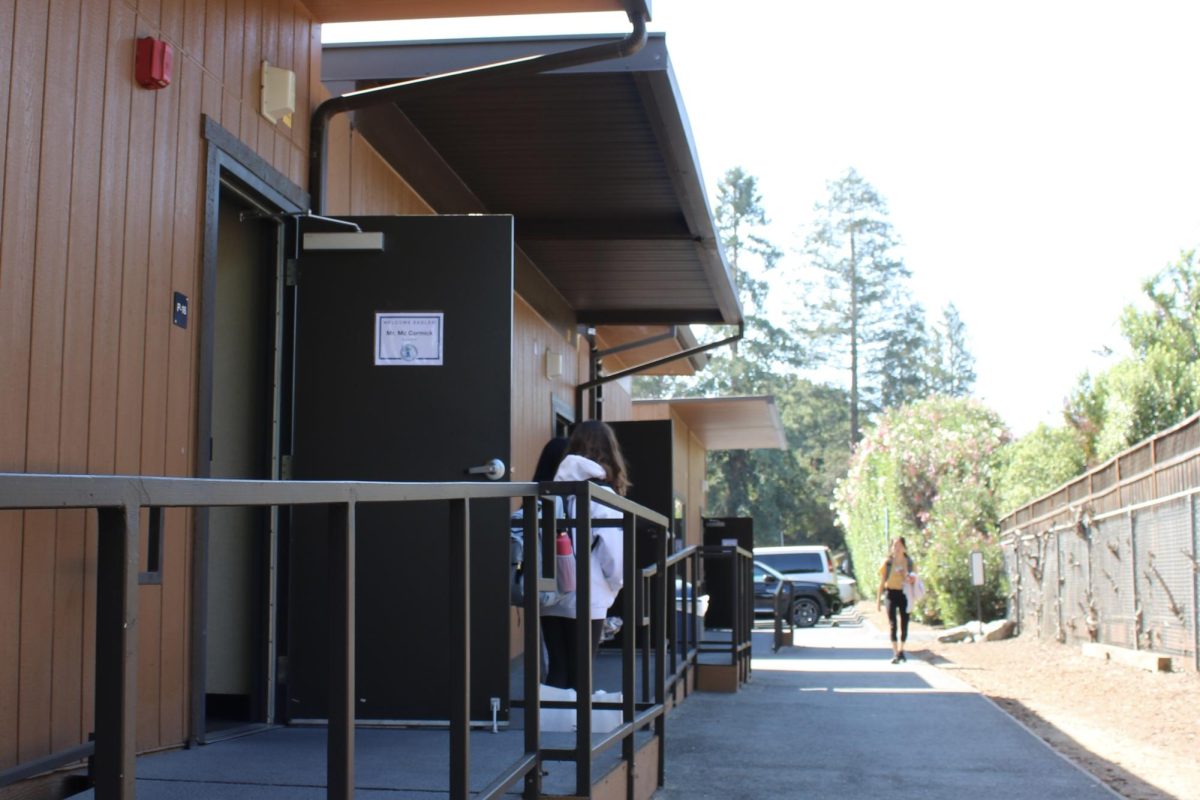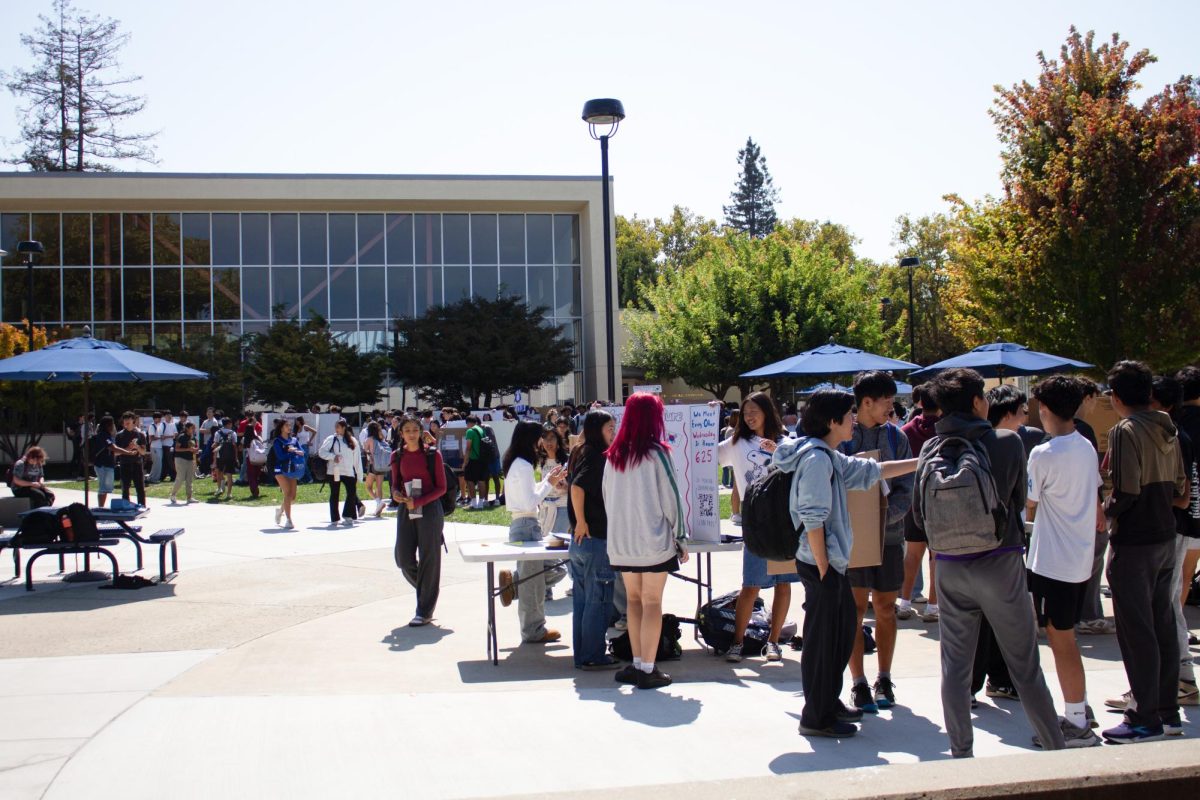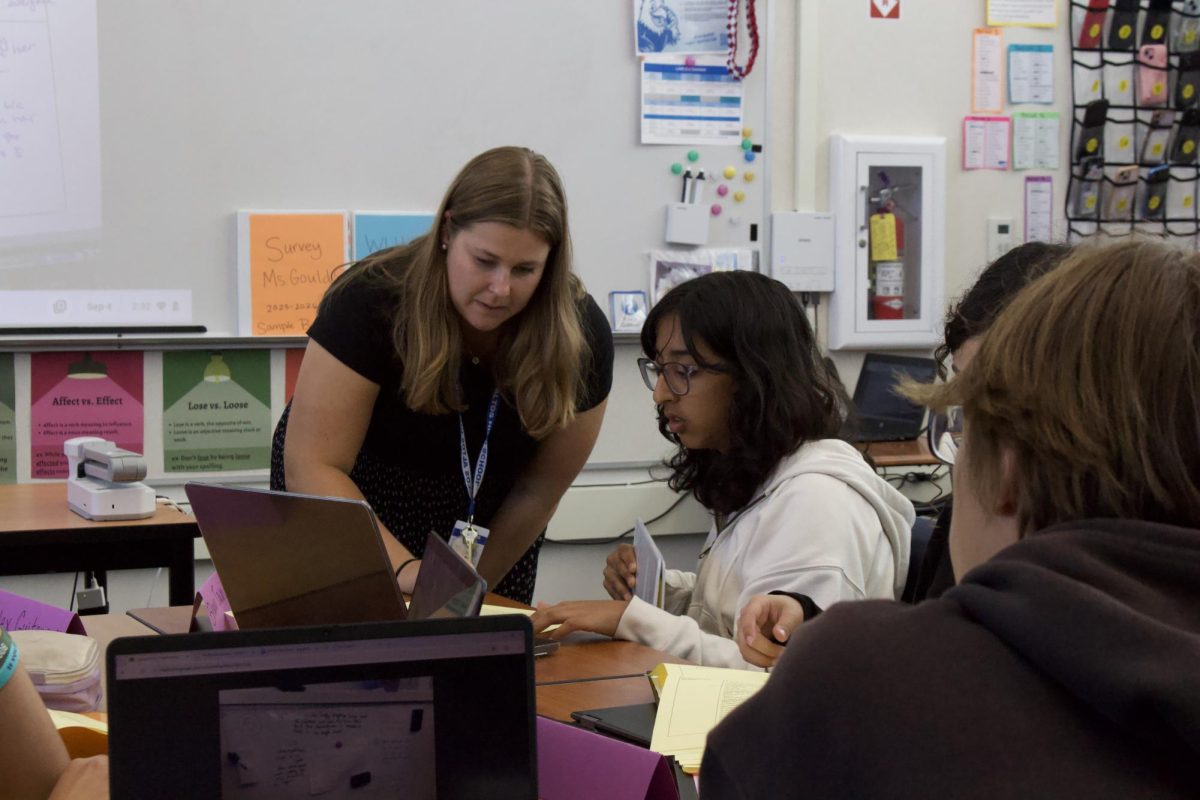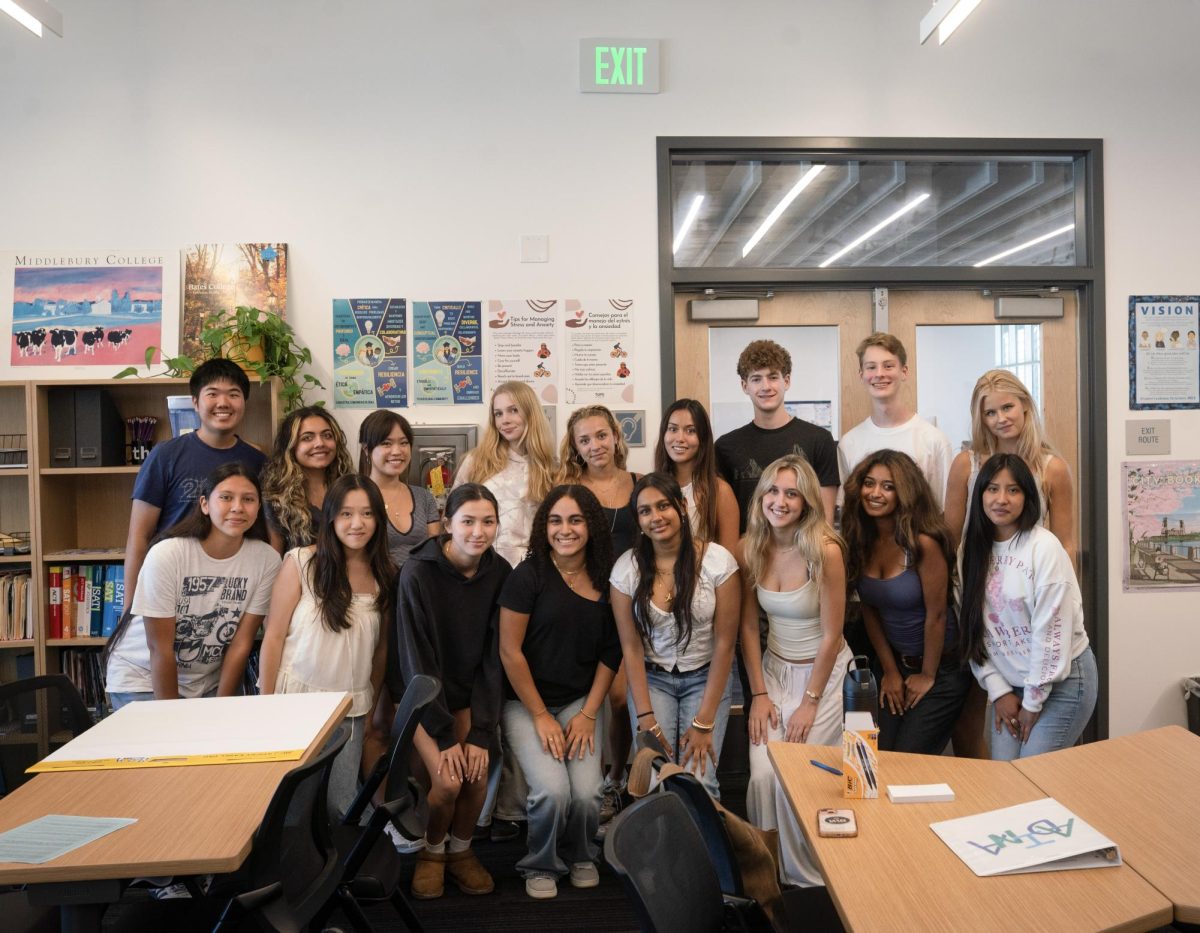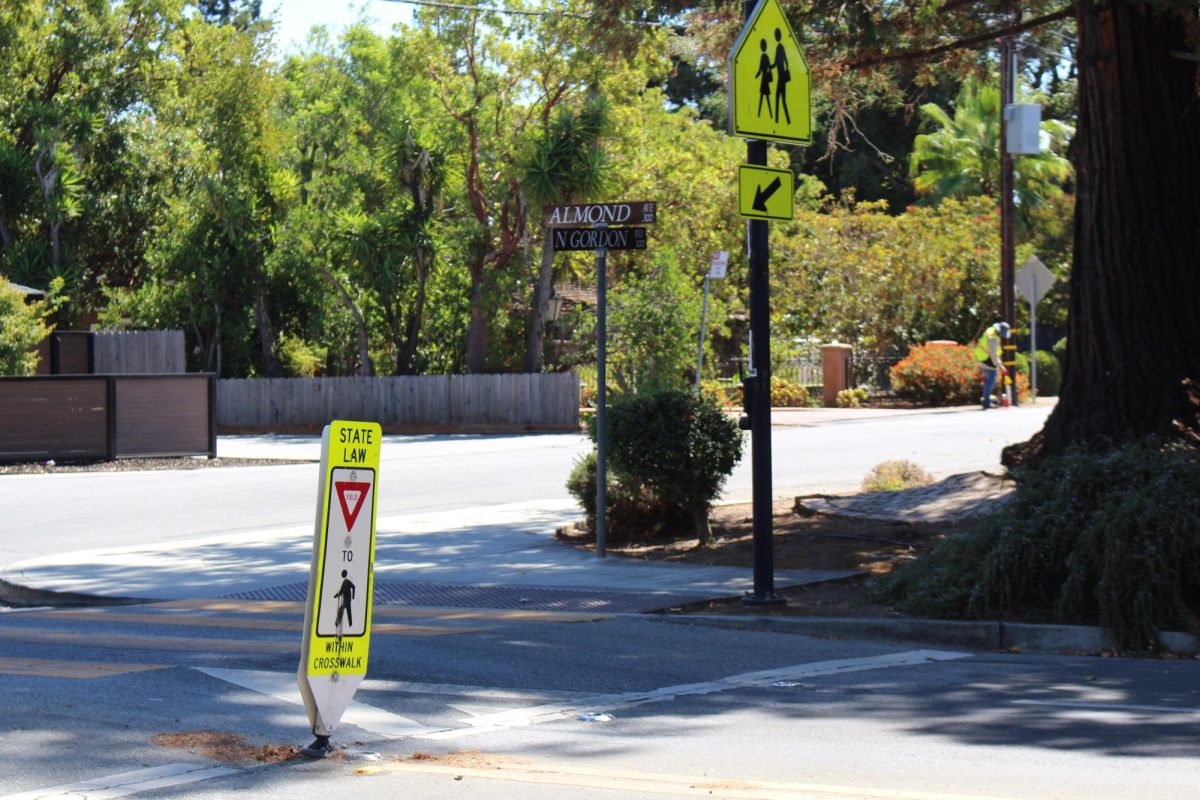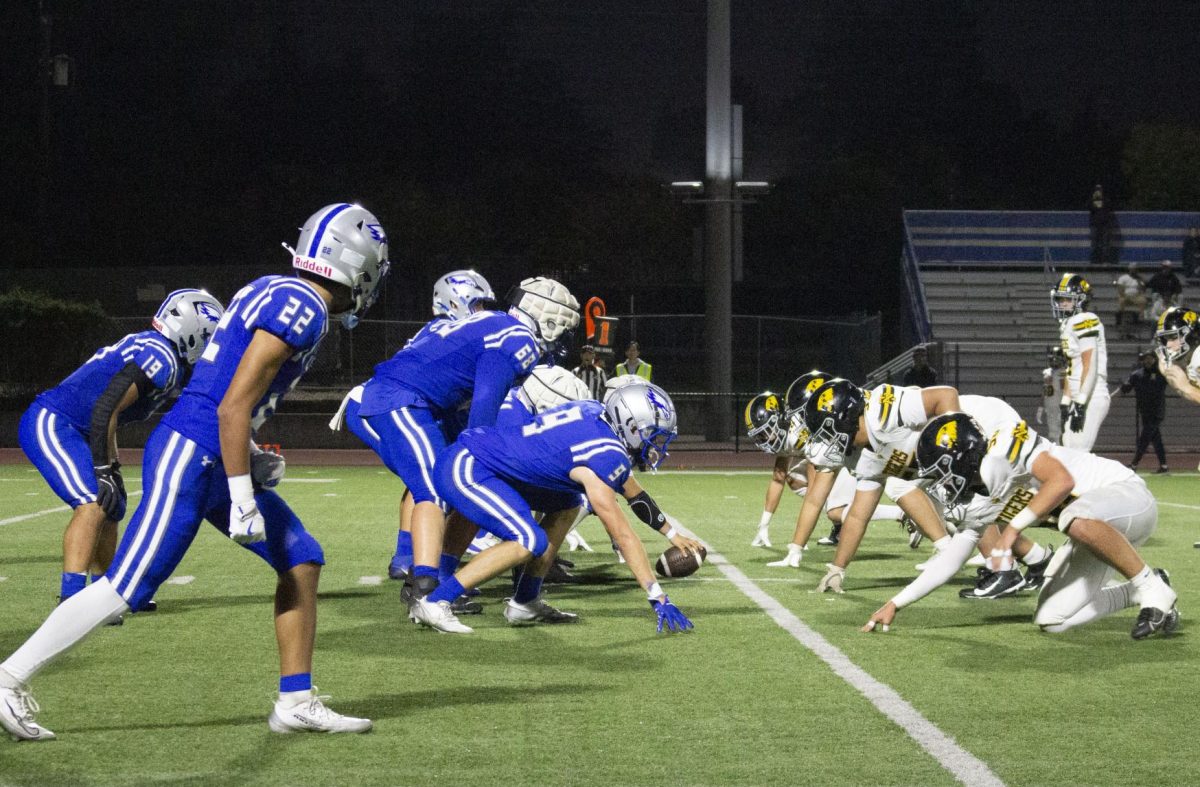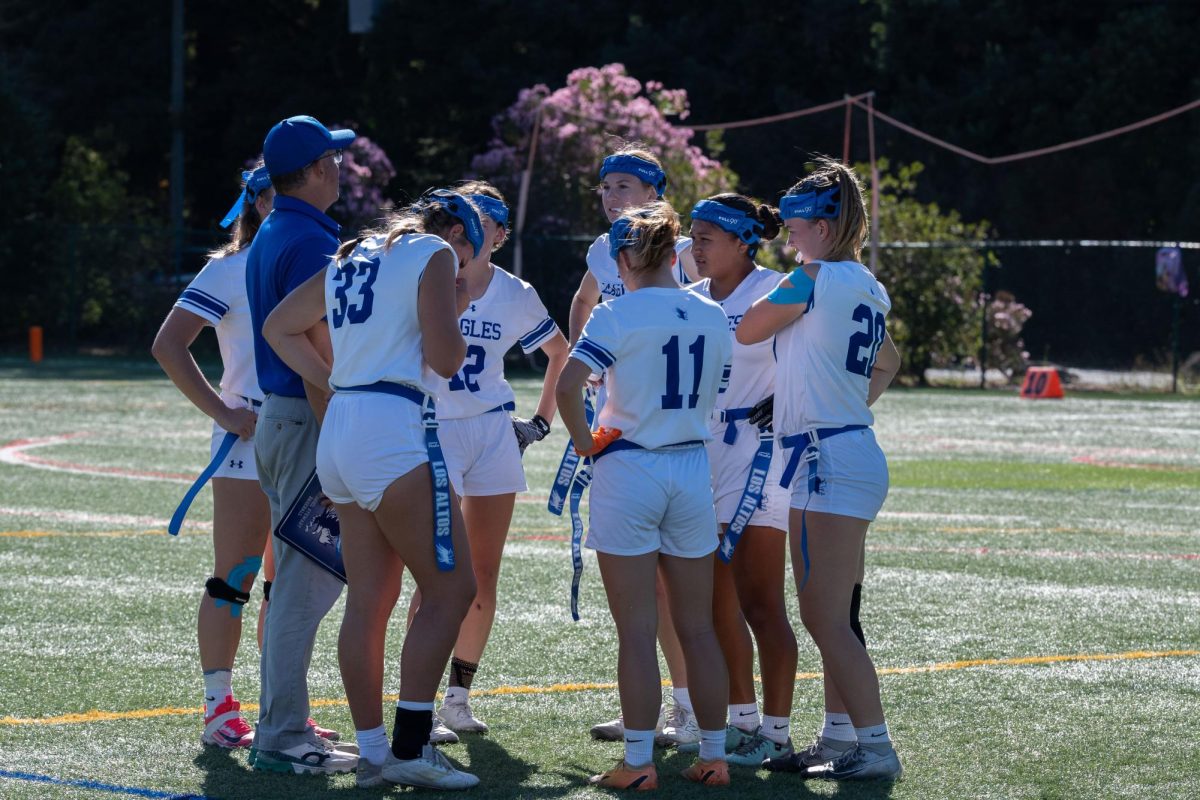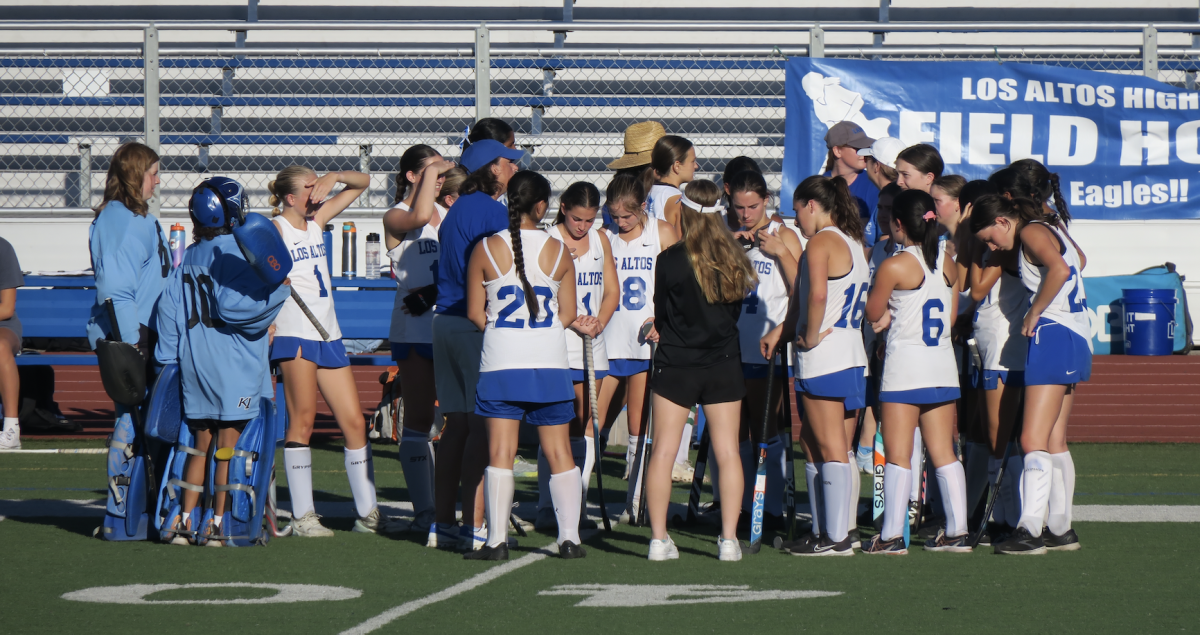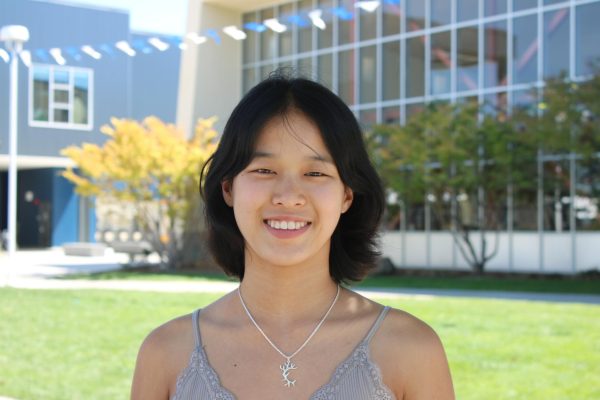Los Altos High School teachers in the English, Math, and Special Education Departments are adjusting to new realities this year after being temporarily relocated to portables. Teacher experiences of relocation — caused by a new wave of construction in the 200s and 300s wings — have varied.
The LAHS administration assigned classrooms on a department-by-department basis. In the second semester of last year, Assistant Principal Derek Miyahara received input for classroom placements from teachers and department coordinators. Principal Tracey Runeare and Assistant Principal Fabian Medina-Morales worked more closely on classroom placements to assign 22 teachers to 16 classrooms.
To receive input, the administration contacted coordinators for individual teachers’ room preferences and directly spoke with some teachers.
“We tried as much as possible to grant people’s requests,” Runeare said. “We had to consider our part-time staff. We had to consider prep periods. We had to look at who shared classrooms and who were in two different departments and had to move across campus as efficiently as possible.”
Department assignments
Many department coordinators requested that teachers of the same department be grouped together for synergistic effects, Morales explained.
“Teachers will sometimes work on courses together, so it makes sense to have them be close to each other,” Morales said. “So as they’re naturally in between periods, they can come out and be like, ‘Oh man, did you see how this lesson worked out?’ or ‘How did this work out for you?’ It’s a natural thing so that conversation can continue.”
Then, administrators determined which section of the portables each department would be located in.
“The English Department had been out in the portables last year,” Miyahara said. “My discussions with the coordinators led us to believe that the Math Department was the logical choice to put out in the portables because they hadn’t already been out there. It was a difficult decision because you can’t satisfy everyone’s needs. But somebody had to be out there.”
Administrators planned to strew Special Education classrooms amongst both sections of portables.
“We tried — particularly with the Special Education teachers — to figure out ways in which we could make the walk less,” Miyahara said. “Because there’s a lot of co-teaching this year, they’re moving back and forth between the back of the campus and the portables.”
According to Morales, administrators prioritized students’ schedules to assign classroom placements.
“We considered teachers and students — but primarily students — because they’re the ones that are traveling most throughout the day, to see how we can minimize the impact on their potential schedules,” Morales said.
Consultation
According to Runeare, teachers and coordinators were contacted via in-person communication, email, or a shared document, depending on where the planning was at during the time. Some teachers received clear and timely communication from administration, allowing them to plan ahead.
“Because of the whole construction, early on, even a year or two before the move, I already knew that we would be moving to the portables after some time,” Special Education teacher Albert Lagazo said. “The administration went room to room and talked to me. They got out of their tables and out of their rooms to tell us about the move. ”
“To be honest, we pretty much knew it was coming,” Special Education teacher Conor White said. “If you were in the 200s or 300s wing, you knew those wings were going to be remodeled. It just wasn’t certain when.”
However, other teachers wished they had been informed further in advance, and that they had more sway in the decision.
“We didn’t find out our room assignments until late,” English teacher Bruce McCormick said, “And some of the people that were moved back into their updated classrooms weren’t able to get into their classrooms until really close to the beginning of the school year. It’s just the logistics of it, the timing, the fact that I am not sure teachers had a lot of input, and the fact that it was tied to the master schedule. It’s not great, and the communication was a little off.”
“I think it’s definitely true that teachers didn’t really get input,” English teacher Jasmine Mark said. “The master schedule and which classes are offered contribute greatly to which classrooms are occupied and how often, which is not something that we generally have a say over. So which classroom I’d be in was not something I was consulted about.”
Teachers’ Opinions
Once the teachers were assigned to their classrooms, the rooms and technology were set up without much issue, making it much easier for teachers to move in. McCormick attributes this to Computer Support Specialist Ronnie Garcia’s work, as well as to teachers who occupied the portables last year.
“I really want to give some props to Mr. Garcia because he’s amazing and really had everything set up before the school year even started,” McCormick said.
“I think the people who were here last year are the real pioneers,” McCormick said. “They had to deal with all the problems. I think they’re our heroes because they ironed out everything last year.”
For many teachers, the switch had been quite smooth.
“I selfishly enjoy being in this room,” McCormick said. “It’s quiet here at the front. I’m away from the construction.”
“This is a big classroom — it’s really big,” Lagazo said. “It allows for movement for students with special needs. We need space to move around, just to get them going and get them focused.”
Still, some teachers expressed that the location of the portables felt isolating.
“For me, it would be a little frustrating to go back and forth,” White said. “I think it’s very new still. I’m definitely moving around a whole lot more than I ever had before.”
“This is the ‘Portable Land’, right?” Lagazo said. “It’s a different world out here. If I had my preference, I would stay in a closer classroom.”
For teachers like White, the move altered her daily routine greatly.
“To say that I would go to the 600s building prior, or to come out to the portables would be very rare because my room was in the 200s,” White said. “It was right next to the administration, near anything in the office, near anything that I needed.”
Some teachers — like White — expressed nostalgia for their previous classrooms.
“For 20 years to have a lot of the same stuff, it was almost like moving out of a house or an apartment,” White said. “There’s also the amount of different things I received from students. I had a ton of pictures on the wall and now it’s a matter of: do I put them back up or do I not?”
However, teachers also understood the circumstances of the situation.
“I have to rush, but that’s what all students do,” Lagazo said. “How can I complain if we ask the students to actually move from one room to the other, despite the distance, within a certain amount of time? So I don’t complain. I’m with them.”
“Considering the fact that there are like a hundred teachers in here, other people’s preferences, and the space, I think the only space they could put us in would be here,” Lagazo said.
“Right now, I think the pros are kind of outweighing the cons for me,” McCormick said. “This move really hasn’t changed my routine in significant ways.”
“There are positives and negatives,” Mark said. “And I think because it’s just one year, I’m like, ‘I can do this for a year easily.’”
Future plans
After this school year, the school should not be expecting any teacher relocations to the portables, according to Morales. But for similar situations in the future, Runeare wants to focus on communicating earlier and more consistently with staff.
“I think the one thing we could do differently next time is to just start the process earlier,” Runeare said. “My main reflection on the process is to let teachers know when they’re going to be able to plan what is needed to do to move and set up sooner so that it doesn’t feel abrupt.”



